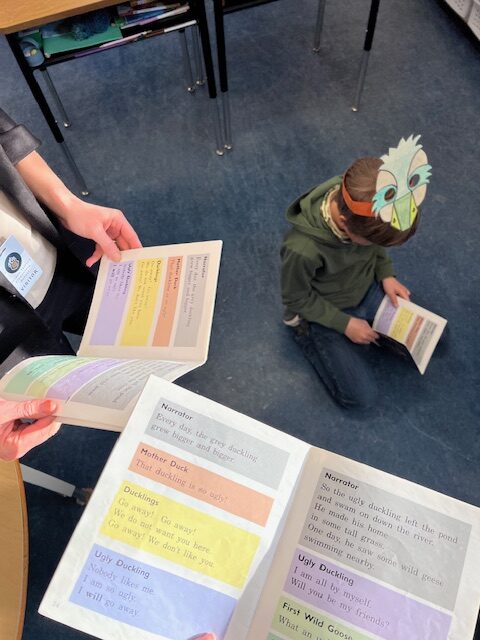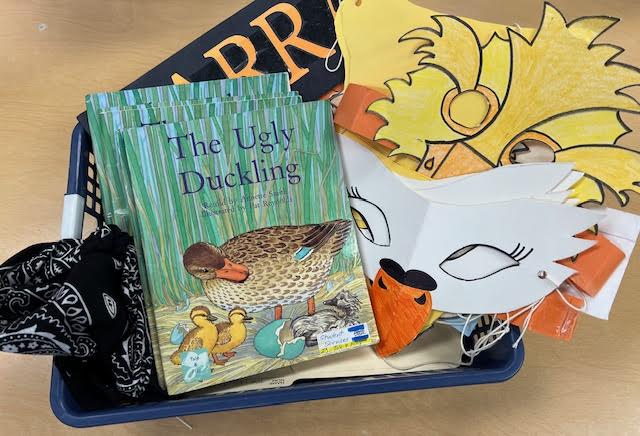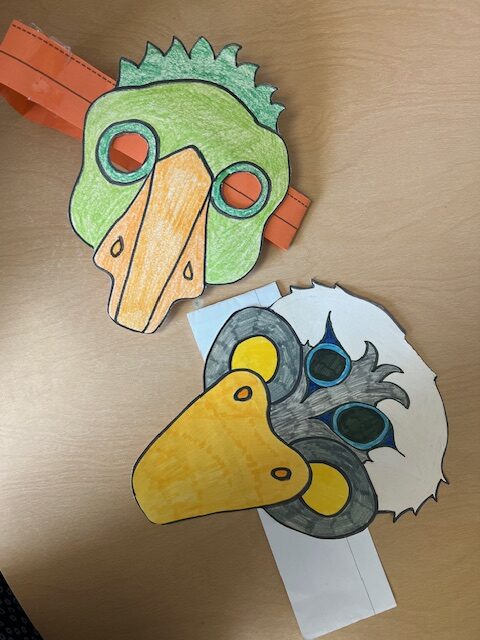As a class, we had the privilege of working with a grade 3 class over two sessions to facilitate Reader’s Theater!
What is Reader’s Theater?
Reader’s Theater is a collaborative strategy designed to develop oral reading fluency by having students read parts from scripts. Students don’t have to memorize their lines but will reread the script several times to become familiar with the language. The focus is on expression and fluency rather than memorization.
Why Use Reader’s Theater?
- Improves fluency: Students practice reading aloud, which helps improve fluency and oral language strategies.
- Deepens understanding: By performing a script, students gain a deeper understanding of the text, characters, and plot.
- Promotes collaboration: Reader’s Theater requires students to work together to bring the script to life, fostering teamwork and communication skills.
- Engages students: The interactive and dramatic nature of Reader’s Theater makes reading a more enjoyable experience.
- Builds confidence: Participating in a performance boosts students’ confidence in public speaking and presentation skills.
Connections to the BC Curriculum (Grade 3 English Language Arts)
- Elements of story: Through the process of reading and embodying characters, students learn about the elements of story (e.g., plot, characters, setting).
- Reading strategies: Students practice their reading skills through repeated script practice, which helps them improve fluency and comprehension.
- Oral language strategies: Students develop their oral language skills by reading aloud to classmates, taking turns, staying on topic, and listening to others.
How to Use Reader’s Theater
- Script selection: Teachers or students choose a script or play to read.
- Character assignments: Each student is assigned a specific character or characters from the script.
- Rehearsal: Students practice reading their lines with expression, paying attention to tone, pacing, and intonation. They may rehearse individually or in small groups.
- Performance: The class performs the script as a “Reader’s Theater” production. Performances can take place in the classroom, during special events, or even in front of other classes or parents.
My Personal Experience
For my Reader’s Theater session, I chose The Ugly Duckling as the script. The teacher allowed the students to select the story they wanted to perform, but she emphasized that they should choose a story that truly interests them, rather than just picking the one their friends were doing.
The story options included:
- The Ugly Duckling
- Little Red Riding Hoof
- Town Mouse and Country Mouse
- Goldilocks and the Three Bears



During our first session, the students chose their story and assigned the characters. They got to pick the roles they wanted to play, which made them more invested in the process. We then went through the script about four times. On the last run-through, the students wore masks representing their assigned characters to help them get a better feel for the story and enhance the performance
In our second session, we did one final run-through with the students, where they practiced wearing their masks and focused on fully embodying their characters through the use of their voices. Each group performed their reader’s theatre, and we were the last group to go. Our group did fantastic, and I was super proud of my students! At the end, the teacher asked the class for a compliment for the group, and one student said they really liked how all the characters had different voices. I believe this really helped build the students’ confidence.
Overall, I really enjoyed reader’s theatre and would love the opportunity to do it again in either a practicum or my future classroom!
Resources:
Leave a Reply
You must be logged in to post a comment.